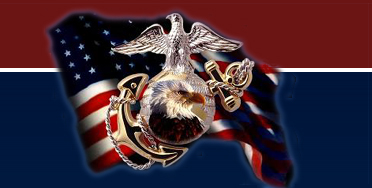| |
The first non-Special Ops unit deployed to Afghanistan is the U.S. Marines Corps-no big surprise to this old Army doggie.
In World War II's South Pacific, Marines were "the firstus with the mostus" into the Solomons, and they led the way into Vietnam. In Korea, they landed second, but unlike the Army units initially deployed there, Gen. Edward Craig's Marine brigade hit the beach ready to fight. And without their skill, sacrifice and courage, the beleaguered Eighth Army would've been pushed into the sea during the early months of the conflict. A similar scenario occurred during the early stages of Desert Storm, in which Marine units came in ready to fight while the first Army troops-the 82nd Airborne Division, with its insufficient anti-tank capability-were a potential speed bump waiting to be flattened.
The Corps, which has never lost sight that its primary mission is to fight, remains superbly trained and disciplined-true to its time-honored slogan "We don't promise a rose garden." When, under Clinton, the Army lowered its standards to Boy Scout summer-camp level in order to increase enlistment, the Corps responded by making boot training longer and tougher. Now under USMC Commandant James Jones, that training has gotten even meaner for the young Marine wannabes waiting in line to join up, as well as for Leathernecks already serving in regular and reserve units. Unlike U.S. Army conventional units-their new slogan, "An Army of One," says it all-the U.S. Marine Corps remains a highly mobile, fierce fighting team that has never forgotten: "The more sweat on the training field, the less blood on the battlefield."
The Marines are flexible, agile, ready and deadly, while the Army remains configured to fight the Soviets-who disappeared off the Order of Battle charts a decade ago. For example, right after Sept. 11, the two Army heavy divisions in Germany-with their 68-ton tanks that can crush almost every bridge they cross-deployed to Poland for war games.
Hello, is there a brain at the top somewhere beneath that snazzy Black Beret being modeled at most U.S. airports by too many overweight Army National Guard troops?
The Army has eight other regular divisions, all designed to fight 20th-century wars. Three are heavy-Tank and Mech Infantry-and two are light, the storied 82nd Airborne and the elite 101st Airborne (now helicopter), and then there's the light/heavy 10,000-man 2nd Division that's in Korea backing up a million-man, superbly fit South Korean Army.
Less the light divisions, our Army's not versatile, deployable, swift or sustainable. The heavy units require fleets of ships and planes to move them, and it takes months to get them there-it took Stormin' Norman six months to ready a force for Desert Storm. The 101st-while deadly, as Desert Storm proved-is also a slow mover requiring a huge amount of strategic lift-ships and giant planes-to get to the battlefield, not to mention the massive tax-dollar load to outfit and maintain it. Sadly, today's Army is like a street fighter with brass knuckles too heavy to lift.
After the Rangers' disaster in Somalia-where there were no tanks to break through to relieve them-and the embarrassment of not being able to fight in the war in Serbia, Army Chief of Staff Eric Shinseki started forming light brigades strikingly similar to USMC units. When I asked, "Why the copycating?" an Army officer said: "It was either copy or go out of business. We'd become redundant because of long-term lack of boldness and imagination at the top."
The Army costs about $80 billion a year to run. It's time for Congress to do its duty and stop enjoying the benefits of all the pork this obsolescence and redundancy provides. If the Army can't change with the times-as the powerful horse cavalry generals couldn't just prior to World War II- then it should fold up its tents and turn the ground-fighting mission over to the Marines.
The law of nature is simple: survival of the fittest. And in the 21st century, heartbreaking as it is for me to admit, the forward-based and highly deployable U.S. Marine Corps is the fittest.
|



